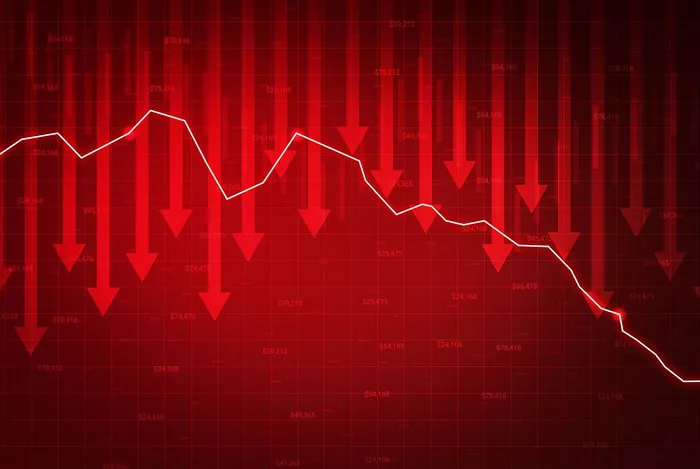In the world of stock trading, the term “gap” refers to a price movement in a stock that creates a gap between the previous day’s closing price and the current day’s opening price. This can occur when there is a significant change in the price of a stock overnight, due to various factors such as earnings reports, news releases, or other market events. Understanding gaps and how they occur is essential for traders and investors as they can offer valuable insights into market sentiment and potential future price movements.
This article will explore the concept of gaps in stocks, the different types of gaps, how they are formed, and their significance in trading strategies. By gaining a deeper understanding of gaps, investors and traders can make more informed decisions and manage their risk effectively.
Understanding Stock Gaps
A gap occurs when a stock opens at a significantly higher or lower price than its previous closing price, leaving an empty space or “gap” on the price chart. This phenomenon is most commonly observed in daily price charts, but gaps can also occur in shorter or longer timeframes, depending on the market conditions and the stock in question.
Gaps can be the result of a variety of factors, including earnings announcements, mergers and acquisitions, changes in economic conditions, or market sentiment shifts. The key characteristic of a gap is that there is a noticeable price difference between the previous close and the current open, which creates a void on the chart.
Types of Gaps
Not all gaps are the same, and understanding the different types of gaps is important for traders who are trying to interpret the market’s behavior. There are four primary types of gaps: common gaps, breakaway gaps, runaway gaps, and exhaustion gaps. Each type has its own characteristics and implications for trading strategies.
Common Gaps
Common gaps are the most frequent type of gap and are typically small in size. They are often seen in the middle of a price range and do not signal a major change in the stock’s trend. Common gaps are usually caused by short-term fluctuations in price and may not have a lasting impact on the stock’s overall trend.
Common gaps are often filled quickly, meaning that the stock price will return to the previous closing level. Traders often consider common gaps as part of the normal market noise and do not always base their decisions on them.
Breakaway Gaps
A breakaway gap occurs when the stock price moves above a resistance level or below a support level, signaling the beginning of a new trend. This type of gap is typically associated with a strong shift in market sentiment and is often seen during major news events, such as earnings reports, economic data releases, or news of a merger or acquisition.
Breakaway gaps are usually accompanied by high trading volume, as investors react to the news and position themselves for the new trend. These gaps often indicate the start of a significant price movement in the direction of the gap, and traders may use them to enter positions early in a new trend.
Runaway Gaps
Runaway gaps, also known as continuation gaps, occur during the middle of a trend and signify that the current trend is likely to continue. These gaps usually occur in a strong uptrend or downtrend and are often fueled by continued positive or negative news that reinforces the current market sentiment.
Runaway gaps are typically larger than common gaps and are accompanied by a continuation of high trading volume. Traders often view runaway gaps as confirmation of the ongoing trend and may use them as an opportunity to ride the trend further. The gap indicates that there is strong momentum behind the stock, and the trend is likely to persist for a while.
Exhaustion Gaps
An exhaustion gap occurs at the end of an extended trend and is often a signal that the trend is nearing its conclusion. These gaps are typically seen after a strong rally or a significant decline, and they represent the final push of buying or selling before the trend reverses.
Exhaustion gaps are often followed by a price reversal, as the market exhausts itself after the final burst of buying or selling pressure. Traders often look for exhaustion gaps as a sign that a trend is about to end, and they may consider taking profits or positioning themselves for a reversal.
How Gaps are Formed
Gaps are formed when there is a significant difference between the closing price of a stock on one day and its opening price the next day. Several factors can contribute to the formation of gaps, including:
News Events
One of the most common causes of gaps is the release of news that has a major impact on the stock. This could include earnings reports, product announcements, changes in company leadership, or macroeconomic news such as interest rate decisions or geopolitical events. When this information is released after the market closes or before it opens, it can cause the stock price to jump significantly, creating a gap.
For example, if a company announces unexpectedly strong earnings after the market closes, its stock may open significantly higher the next day, creating an upward gap. Conversely, if a company reports disappointing earnings, its stock may open lower, creating a downward gap.
Economic Data
Economic data, such as GDP growth, unemployment figures, inflation reports, or consumer sentiment indices, can also cause gaps in stock prices. Positive economic data may cause stocks to rise, while negative data can lead to a sell-off. When this data is released outside of regular trading hours, it can result in a gap when the market reopens.
Mergers and Acquisitions
Mergers, acquisitions, or other corporate restructuring events can lead to significant price movements in the stocks involved. When news of a merger or acquisition breaks, the stock price of the company being acquired may jump, while the stock price of the acquiring company may either rise or fall, depending on market perception of the deal.
These events often lead to breakaway gaps, as investors react to the new information and adjust their positions accordingly.
Market Sentiment and Speculation
Market sentiment, driven by investor psychology, can also play a role in the formation of gaps. If investors become overly optimistic or pessimistic about a particular stock or sector, it can lead to a sharp price movement. Additionally, speculative activity, such as rumors or short squeezes, can cause gaps to form as traders react to the changing sentiment.
Earnings Reports and Forecasts
Earnings reports and future guidance from companies are significant factors in stock price movements. Positive earnings surprises or optimistic forecasts can lead to large upward gaps, while disappointing earnings or cautious guidance can cause downward gaps. Earnings reports are one of the primary catalysts for breakaway gaps, as they often lead to shifts in market sentiment and investor behavior.
The Significance of Gaps in Trading
Gaps are not just a visual anomaly on a stock chart; they can provide valuable insights for traders and investors. Understanding the different types of gaps and how they are formed can help traders identify potential opportunities and manage risk effectively.
Predicting Future Price Movements
Traders often use gaps to predict the future direction of stock prices. For example, a breakaway gap that occurs after a period of consolidation can signal the start of a new trend, while a runaway gap in the middle of an uptrend suggests that the current momentum is likely to continue.
Exhaustion gaps, on the other hand, can be a warning sign that a trend is coming to an end. Traders may use this information to prepare for a reversal and adjust their positions accordingly.
Gap Filling
One important concept to understand when analyzing gaps is the idea of “gap filling.” In many cases, gaps will eventually be filled, meaning that the stock price will return to the level it was at before the gap occurred. This is especially true for common gaps, which tend to be short-lived and quickly reverse.
Gap filling can be an important factor for traders who are looking to capitalize on price corrections. By monitoring gaps and waiting for them to fill, traders can potentially enter positions at more favorable price points.
Volume and Gap Analysis
Volume plays a crucial role in gap analysis. High volume accompanying a gap can provide confirmation of the strength of the price move, while low volume may suggest that the gap is not significant and could be more likely to reverse. Traders often look for volume patterns that align with the type of gap to determine whether the gap is likely to lead to a sustained price move or whether it will quickly fade.
How to Trade Gaps
There are several strategies that traders can use when trading gaps, depending on the type of gap and the market conditions.
Trading Breakaway Gaps
When a breakaway gap occurs, it often signals the start of a new trend. Traders may enter long positions when a stock breaks above resistance or short positions when it falls below support. These gaps are often accompanied by high volume, which provides confirmation of the new trend.
Trading Runaway Gaps
Runaway gaps can be profitable for traders who are already positioned in the direction of the trend. Traders may choose to hold their positions and ride the momentum, or they may enter new positions to take advantage of the continued upward or downward movement. Traders should be cautious, however, as runaway gaps can lead to overbought or oversold conditions, which may result in a price correction.
Trading Exhaustion Gaps
Exhaustion gaps often signal that a trend is coming to an end. Traders may choose to take profits or reverse their positions by shorting stocks in an uptrend or buying in a downtrend. Exhaustion gaps can offer profitable opportunities, but they require careful timing and a solid understanding of the market dynamics.
Conclusion
Gaps in stocks are an important aspect of technical analysis and can provide valuable insights for traders and investors. By understanding the different types of gaps, how they are formed, and what they signify, traders can develop strategies to capitalize on these price movements.
While gaps can be a sign of significant changes in market sentiment or corporate performance, it is important for traders to approach gap trading with caution. Not all gaps lead to sustained price movements, and it is essential to consider factors such as volume, market context, and the type of gap before making trading decisions.
Ultimately, gaps provide an opportunity for traders to gain an edge in the market, but they also carry risk. By using proper risk management strategies and maintaining a clear understanding of the market, traders can effectively navigate the world of gaps and make informed trading decisions.
Related topics:

































